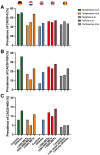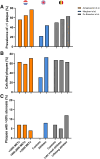Coronary atherosclerosis in athletes: emerging concepts and preventive strategies
- PMID: 39791533
- PMCID: PMC11887545
- DOI: 10.1093/eurheartj/ehae927
Coronary atherosclerosis in athletes: emerging concepts and preventive strategies
Abstract
There should be no assumption that an athlete is immune to coronary artery disease (CAD), even when traditional cardiovascular (CV) risk factors appear well-managed. Excelling in certain aspects of health does not equate to total CV protection. Recent data from cardiac imaging studies have raised the possibility that long-term, high-volume, high-intensity endurance exercise is associated with coronary atherosclerosis. Whilst the risk of CV events has not been shown to rise with athletic activity, the potential for CAD should not be overlooked as it is the leading cause of sudden cardiac death in athletes >35 years of age (i.e. 'Masters athletes'). Evaluating both traditional and non-traditional risk factors for CAD is the most important part of pre-participation evaluation in Masters athletes. When managing athletes at risk of CAD it is important to adopt a shared decision-making approach regarding lifestyle adaptation and lipid-lowering treatments. In the great majority of athletes, after excluding the presence of symptoms and inducible ischaemia, this advice should include encouragement to continue exercising as available data indicate that higher levels of fitness are associated with a markedly attenuated incidence of coronary events regardless of the severity of coronary disease. Future research is needed to establish the relationship between clinically relevant CAD outcomes and coronary artery calcification in Masters Athletes, the role of sex, as well as exploration of the mechanisms underpinning these unexpected CV adaptations.
Keywords: Athletes; Cardiovascular risk; Coronary atherosclerosis; Coronary computed tomography angiography; Exercise; Ischaemic heart disease; Sudden cardiac death.
© The Author(s) 2025. Published by Oxford University Press on behalf of the European Society of Cardiology.
Figures









References
Publication types
MeSH terms
LinkOut - more resources
Full Text Sources
Medical
Miscellaneous

